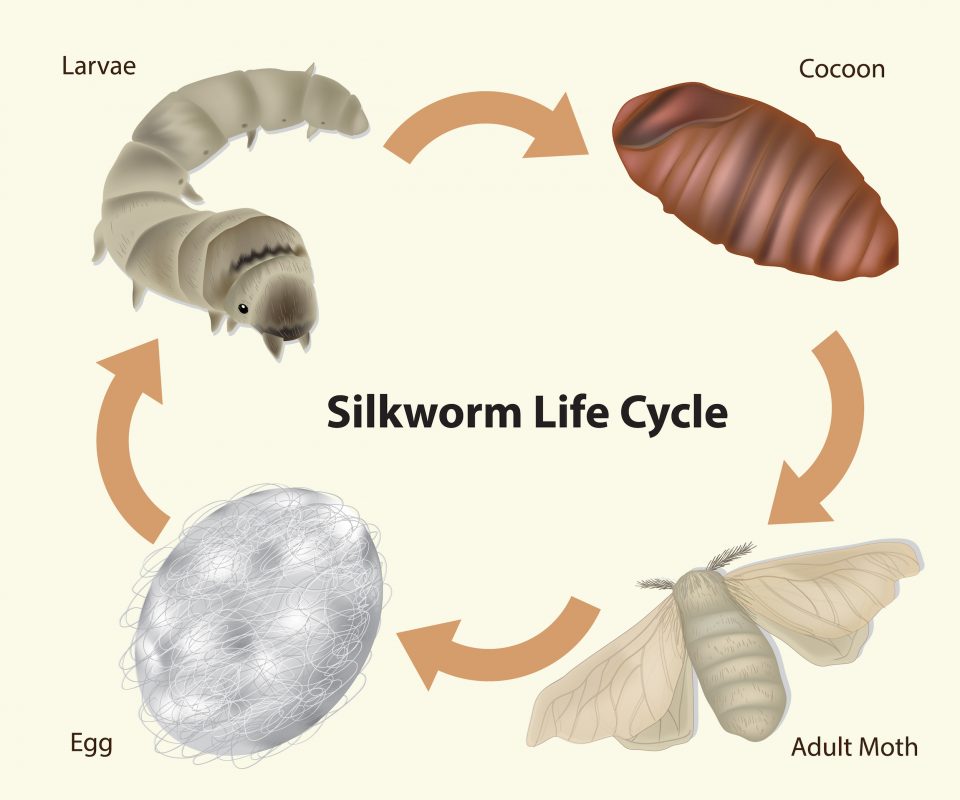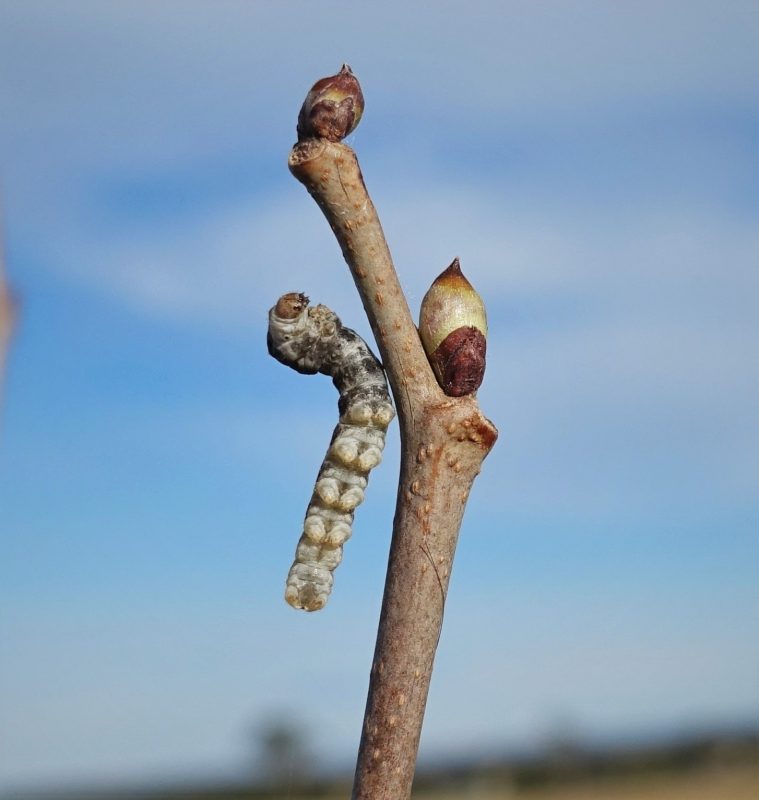Blog
A Beginner’s Guide to Silkworms (Everything You Need to Know)
Are you thinking of purchasing silkworms as a pet?
In this article, you will learn about all the reasons that silkworms are a great option for both adults and children. We’ll answer your most common questions, like:
- Is a silkworm an appropriate pet for your child?
- Where will you find silkworms?
- What is the life cycle of silkworms?
- How to take care of silkworms?
- How to deal with dangers to silkworms?
- Is a domesticated silkworm a suitable pet for you or your kids?
The (Brief) History of Silkworms
During ancient times, silk became highly prevalent in the East.
That’s what made them so popular. Silkworms played a massive part in this industry. However, it required skillful farmers to take care of them. But now, thanks to advanced human handling, even children can look after silkworms.
However, they are not interactive or amusing, and kids may get bored after a while. A silkworm’s different life cycle may renew interest in kids, but parents should supervise how the children handle these pets.
They may have to share the responsibility of taking care of the silkworms along with their kids.
Interested in learning more about silkworm care? Find out here.
Where will you find silkworms?
You don’t usually find silkworms in pet stores. Instead, you will have to search for online stores to get them.
Looking to purchase your own silkworms? Buy online here!
Silkworms are mostly available as young caterpillars or eggs. If you are planning to purchase one, don’t forget to order a few specimens from a well-known dealer that has a lot of positive reviews.
Many dealers try selling silkworms in a moth or cocoon stages. Try not to purchase them. Cocooned silkworms may be dead by the time they reach you. And moths may not handle the sales handling process, especially when dealers mail them. They eventually die a premature death.
What is the life cycle of silkworms?
Silkworms go through a simple life cycle. The eggs look tiny and dark. When these eggs hatch, the babies look small and black. Slowly, they become recognisable. The silkworms feed voraciously and then slowly spin a cocoon where they stay comfortably for a long time.
Eventually, the cocoon bursts, and a moth comes out of it. However, after mating and depositing eggs, moths die. When the silkworm reaches its moth stage, it doesn’t eat anymore.

Find out more about the life cycle of silkworms here.
How to take care of silkworms?
It is best to keep the eggs away from direct sunlight. Keep them at a pleasant room temperature. If you are petting a silkworm for the first time, always ask the date when the eggs were laid. It may take two weeks for silkworm eggs to hatch. So, you should have everything ready to take care of them when they come home.
This is a valuable step for young children with stress management specialist Janine Brundle explaining “engaging with or caring for an animal can increase levels of the stress-reducing hormone oxytocin and decrease production of the stress hormone cortisol. These hormonal changes can help a nervous child feel more relaxed.”
When the silkworms come out of the eggs, they look like small black ants. Make sure you keep them in an escape-proof container. Usually, silkworms can stay in any container as long as you provide them fresh food. It is the hungry silkworms that wander around. Try to stock up on mulberry leaves as it is the staple food for silkworms during their growing stage.
Use our free silkworm raising checklist here.
Remember:
- It is better to cut or grate the leaves and set them as a carpet.
- Do not forget to check the newborns as they may not understand the feeding concept. This can make them starve and wander for food.
- The leaves should not have any moisture or water. The worms may drown in the water considering their small size.
- If the leaves start to wither, change them immediately. However, don’t throw away the silkworms immediately, as they are very tiny and may be left on the leaves.
Caring for Growing Silkworms
Silkworms usually shed their skin approximately four times when they grow. You shouldn’t rip off the old skin. Unless there is an infection, don’t fiddle with the old skin; allow it to transform naturally.
Silkworms are vulnerable to touch, and that’s when adults must supervise. Kids are always enthusiastic about taking care of silkworms, but they may accidentally bruise them, leading to their death. If you need to pick the silkworm, do it very gently. Try not to use your hands. Take a leaf to move it.

The care of silkworms is more than getting in good habits. According to the mental development experts at Mindset Mastery, “caring for vulnerable pets like silkworms helps to develop a sense of empathy while establishing meaning and purpose. The lessons learned in youth impact adulthood, so each small silkworm actually builds the building blocks of a healthy future.”
Silkworm Care Tips:
- You can spray water lightly, but don’t make it too wet. The mulberry leaves have enough water for silkworms. But, a few drops while moving them won’t hurt.
- Always feed them fresh leaves.
- Keep the box away from ants, cold temperatures, and direct sunlight. Although silkworms are tough, they are prone to bacterial infections and predators. Also, wash your hands before touching them.
The Cocoon and Moth Stage
Silkworms wrap themselves in a ball of silk when they are approximately one month old. Kids often find this process fascinating to watch.
Many people think silkworms are worms, but they are actually caterpillars. Their “worm” stage is the larval stage of moths. Approximately two weeks after making their cocoons, the silkworms will emerge as moths.
According to the team at Mukti Freedom Yoga, who raise silkworms and butterflies, it is important to provide instant care to aid in the life cycle of your silkworms. They explain “ while moths look plump and fluffy, and can’t fly or eat. Remember, they only have a week to live, and finding a mate is their primary objective. So, if you wish to keep silkworms, place the moths in the same box. You will soon find yellow eggs that turn black, and the life cycle starts again.”
With all this information you’re perfectly equipped to start your exciting silkworm journey.
So, what are you waiting for?
Before You Go. Did You Know?
- The survival of Bombyx Mori, one of the popular moth species, depends entirely on humans. All its wild populations are extinct, and only the domesticated ones live.
- Silkworms are available in various colors. Some have stripes, while some are pure white. The striped ones have either chocolate or black stripes on them.
- Mulberry leaves usually produce yellow silk and a very small quantity of white silk. Some people who feed their pets with beetroot leaves report that they see reddish cocoons.

